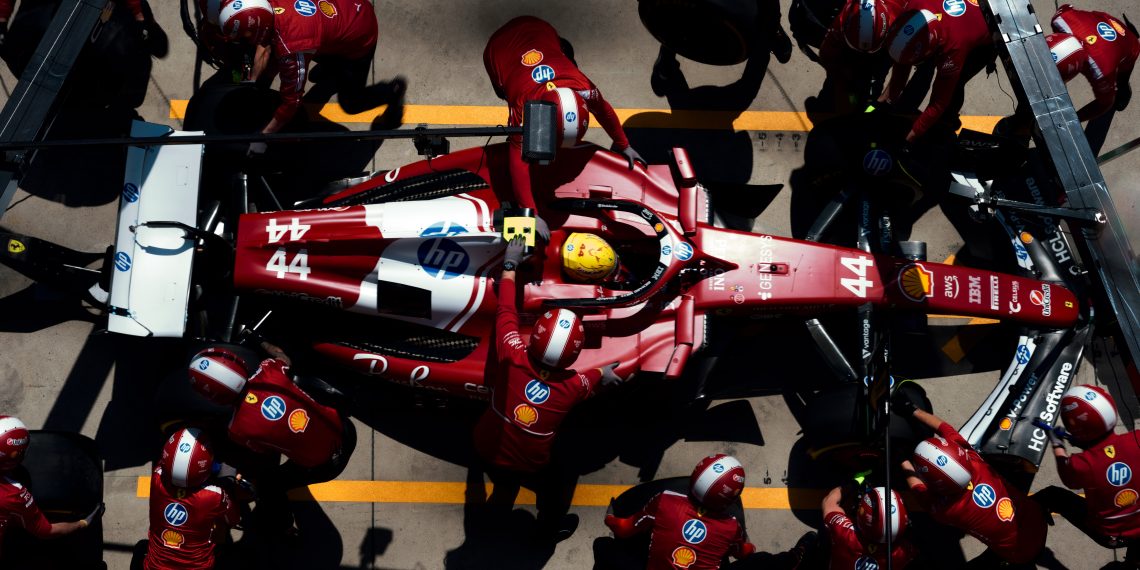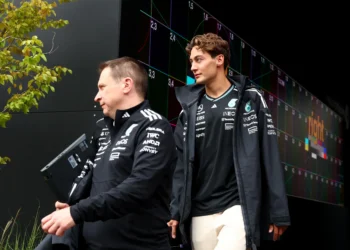After a disappointing performance at the Chinese Grand Prix, Formula One superstar Lewis Hamilton has vowed never to repeat what he describes as a “mad” Ferrari experiment again. The seven-time world champion pointed a critical finger at mid-race adjustments to his Ferrari SF-25, a move that he admits not only worsened the car’s performance but also led to him and his teammate Charles Leclerc falling behind in the race.
Hamilton’s Chinese Grand Prix journey was a tumultuous one, marked by stark contrasts. He dominated the Sprint, racing from pole position to victory, and impressively put a four-second gap between himself and runner-up Oscar Piastri in the closing laps. However, his teammate Leclerc lagged behind, crossing the finish line 12 seconds later in fifth place.
In an attempt to advance the SF-25’s performance, both Hamilton and Leclerc made tweaks ahead of Saturday’s qualifying session. Unfortunately, this backfired, sending the car’s performance in a downward spiral. As rivals McLaren and Mercedes found their groove, Ferrari stumbled, with Hamilton and Leclerc finishing in the third row, approximately three-tenths off the pace.
The Grand Prix saw a similar narrative unfold. Hamilton and Leclerc ended up in fifth and sixth place, lagging more than 20 seconds behind race winner Piastri’s McLaren. Adding insult to injury, both Ferrari drivers were later disqualified. Leclerc’s SF-25 was found to be one kilogram below the minimum weight, while Hamilton’s skid block wear was judged to be over the legal limit.
Hamilton, in an interview with Sky F1, expressed his dissatisfaction with the race outcome, attributing the poor performance to the changes made to the SF-25. He noted that the adjustments, which had been previously tested by Leclerc in Bahrain, resulted in a significant drop in the car’s performance from the Sprint to the qualifying and even further into the race.
Former F1 driver and Sky pundit Karun Chandhok echoed Hamilton’s sentiments. He pointed out that Hamilton’s speed had significantly dropped compared to the Sprint, ultimately costing him in the Grand Prix. Chandhok further explained that the changing conditions on the race day required a quick reaction, something Ferrari failed to do with their decision to change the cars’ setup ahead of qualifying.
While Hamilton remained tight-lipped about the specific changes made to his SF-25, he dismissed the idea that the car’s ride-height was the culprit for his loss of pace. He was, however, candid about the lessons he had learned from the experience. “I know not to do that again,” he said, referring to the tweaks made to his car.
In the high-stakes world of Formula One, every decision can make or break a race. For Lewis Hamilton and Ferrari, the Chinese Grand Prix was a harsh reminder of this reality. As the dust settles, the lessons learned will undoubtedly inform their strategy moving forward. As for Hamilton, one thing is certain – he won’t be repeating the ‘mad’ Ferrari experiment anytime soon.













